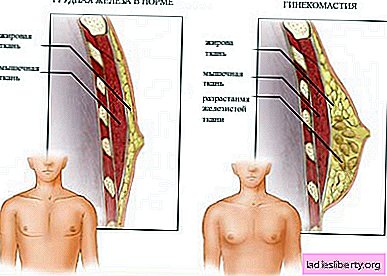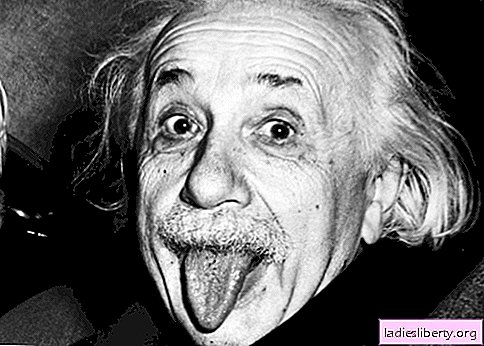
Osteochondrosis of the cervical spine is a degenerative-dystrophic lesion of the vertebrae and intervertebral structures of an inflammatory nature.
Such diseases of the musculoskeletal system require immediate medical attention: with chronicity, the process is practically incurable.
Most often resort to medical treatment, which involves taking certain drugs. However, do not forget about such an effective method of treatment as exercise therapy (physiotherapy exercises).
Although physical therapy in itself cannot replace physiotherapy and drug therapy, it will be a good help in the treatment.
General information about cervical osteochondrosis
As said, osteochondrosis is an inflammatory disease that affects the intervertebral structures and the vertebrae themselves. Most often, the disease manifests itself for the following reasons:
• Inactivity (lack of movement).
• Long-term static loads on the spine in the cervical region with the physical nature of work, with improper sleep, etc.
• Adverse environmental conditions.
• The presence of concomitant diseases of the musculoskeletal system.
• Taking steroid drugs.
• Subcooling.
• Age over 40 years.
The symptomatology of osteochondrosis is also specific. Pathology is characterized by:
• Intense pain in the neck (manifested due to infringement of the nerve roots and inflammation).
• Shoulder discomfort (caused by muscle hypertonicity).
• Numbness in the hands.
• Feeling of goosebumps.
• muscle weakness.
Osteochondrosis is an unpleasant disease, leading to a decrease in the functional activity of the neck and leading to the development of intervertebral hernias.
The mechanism of action of exercise therapy
Physical therapy is indicated for any patient suffering from problems with the cervical spine. LFK solves several problems at once:
• Relieves muscle hypertonicity. This is one of the prerequisites for the prevention of pain and complications.
• Helps strengthen neck muscles.
• Allows you to normalize the power of the intervertebral disc.
• It makes it possible to stop the destruction of spinal tissues.
• Normalizes motor activity of the spine at neck level.
To understand these issues and eliminate pathological processes, it is necessary to regularly carry out complexes of simple exercises. There are dozens of sources with descriptions of exercises for osteochondrosis of the cervical spine, but not all gymnastics methods are equally effective and safe.
Sparing exercises for osteochondrosis
To maintain the neck in tone, it is recommended to perform "soft" sets of exercises. It is important to keep in mind: do not be zealous during the period of exacerbation. These exercises can only be done between exacerbations (in remission or subacute condition).
Complex number 1
1) Get in a comfortable position. Lower your hands "at the seams", keep a flat posture, straighten as much as possible. Carefully and without haste, turn your head almost 90 degrees. To begin with, a fairly small amplitude, as you improve the head you need to turn more and more. Haste is dangerous: dislocation of the vertebrae or pinching of the nerves can occur. During the period of exacerbation, you can make slight turning movements of the head, but nothing more. A similar exercise to perform 7-10 times in each direction.
2) Starting position, as in the first exercise. Standing, with an elongated back. Relax your neck as much as possible. Slowly lower your head to touch the chin of your chest. With a light spring movement, raise your head to its original position. If the level of mobility of the neck does not allow you to bend so much - the exercise is performed as much as possible. Quantity - 7-10 times.
3) The position is maintained, as in the first two exercises. Relax the muscles of the neck and shoulders. With a fuzzy movement, bend the head back. It is important to do this slowly and smoothly to avoid injuries. Extend the chin as far as the anatomy of the patient’s cervical region allows.
A similar set of three exercises helps to restore nutrition of the cervical vertebrae, returns elasticity to muscles, and flexibility of the spinal column.
Complex number 2.
It can be performed during an exacerbation.
1) Position - preferably standing. Acceptable and sedentary. Straighten the neck, relax all the muscles of the collar zone, including the shoulders. Put one palm on your forehead. Make a move, as if there is a desire to push your hand away with your head. Such resistance leads to a sharp tension in the muscles of the neck, and then to their relaxation.
2) Perform an identical exercise, pressing his hand to the temporal region. The movement should be smooth and unsharp. The "confrontation" of the arm and head should last 3 seconds. It does not make sense to continue longer: lactic acid will begin to accumulate and the muscles will become tired, it will be more difficult to do physical exercise. Run 5-10 times.
3) Take a sitting position. Stretch your back and neck, relax. Pull your shoulders to your ears, hold for 3-5 seconds each time. Then lower your shoulders and relax again. Maintain a position longer is also not worth it.
4) Stand up straight, arms extended across the body, forming the letter "T". Make 10 circular motions in one and then in the other direction.
5) At the end of the exercises, rub the neck (light massage). Massage the neck with rubbing and circular motions for 3 minutes.
6) Starting position - standing or sitting with a straightened back. Within three minutes to make shaking movements of the head. The amplitude should be minimal. By nature, this exercise is similar to a non-verbal “yes” gesture.
7) Keep the same position. At the same pace and amplitude, make no motions.
Complex number 3.
1) Stand up straight, feet shoulder width apart. Tilt your torso, extend your arms. Perform an exercise that everyone has known since school days, as a "mill".
2) Sit or stand up. Straighten the spinal column. Touch the shoulder with your ear, then repeat the same thing on the other side.
3) Make head movements imitating yes and no gestures.
Everything described is the simplest exercise for cervical osteochondrosis.




Who should use such complexes?
These complexes are ideal for people with an initial stage of neck problems, as well as for patients with severely limited spinal mobility. They can be performed, including in the acute course of the disease (except for the first).
The most effective exercises for osteochondrosis of the cervical spine
Physical activity from complex No. 1 is strictly contraindicated in the period of exacerbation. They are appointed only during remission.
Complex number 1
1) The lying position (you can’t lie on the bare floor, osteochondrosis "does not like" hypothermia). Place the right hand on the stomach, put the left on the chest (in left-handed people, accordingly, the opposite is true). Start rhythmically and slowly breathe deeply. Take in as much air as possible.
2) The starting position is identical. Hands do not need to be wrapped, you need to lean on them. Gently rise on your hands, stretch your neck, then also carefully return to the original position. Repeat 7-10 times.
3) Lie on your stomach. Hands straighten along the body "at the seams". Turn your head 90 degrees and touch the floor with your ear. Repeat the same with the other ear.
4) Take a sitting position. Straighten the neck. On exhalation, lower your head to your chest and squeeze your chin as much as possible, while breathing in, return to the starting position.
5) Pose - sitting or standing. Neck and shoulders relax. Lower the head to the chest, begin to make light rotational circular movements of the head along the axis of the spine. Attention! Perform such a gymnast must be extremely careful, the risk of dislocations is great.
Complex number 2
The complex consists of three parts: warm-up, main part, graduation. Such gymnastics can be performed, including during an exacerbation. It is universal. Standing position.
1) Put your hands on your shoulders. Make circular motions. 10 times one way, 10 the other way.
2) Upper limbs with clenched fists apart. Bend your arms (as if wanting to boast of your biceps inflated), then straighten, forming the letter "T" in the body. At the end of the exercise, shake hands to relieve tension.
3) Perform exercise number 1 of the gentle complex number 2. In this case, the hands should be brought into the castle and pressed to the forehead. This exercise is considered more difficult because the stress is higher.
4) Standing position. Hands to be locked, placed on the back of the head. Overcoming the resistance of the hands to try to throw back his head. This exercise is very similar to the previous one.
5) Bring the shoulders forward, as if shivering, return them to their normal position.
6) Raise your shoulders back.
7) Lie on the floor. Raise your neck as high as possible, stay in this state for 5 seconds, then return to a normal position.
8) Hand grasp your head. Pull in the opposite direction
All the described exercises, both gentle and more complex, will be performed 7-20 times 3-4 times a day.
Also well-established neck exercises according to Bubnovsky
This kind of gymnastics is useful for people during exacerbations (not counting the first complex), it also helps to normalize the nutrition of the spine and is ideal for those who want remission to last as long as possible.
Why do exercises need?
They need to be done for several reasons:
• Despite the effectiveness of medicines, they are not able to restore the mobility of the neck. This is just one of the tasks of physiotherapy exercises.
• After exercise, nutrition of the spine improves.
• Remissions become longer.
• The spine restores motor activity.
• Muscle relaxation and pain reduction occur.
Cautions and recommendations
No matter how effective exercises are for cervical osteochondrosis, you need to do them correctly. Otherwise, it is likely that everything will only get worse.
Recommendations:
• Most exercises can be done in the acute period, but you should carefully listen to your own health.
• If neck pain is observed during exercise, stop exercising immediately.
• Before starting classes, it is recommended to consult with a physical therapy doctor.
• It is better to do gymnastics in a group, but no one forbids doing it at home.
• It is worth doing neck exercises several times a day, otherwise the effect will be minimal.
• All exercises must be performed slowly so that there are no injuries.
Exercise therapy works well in combination with other methods of treatment. It is important to carry out exercises correctly, observing all safety rules. Then the cervical spine will say thanks.











